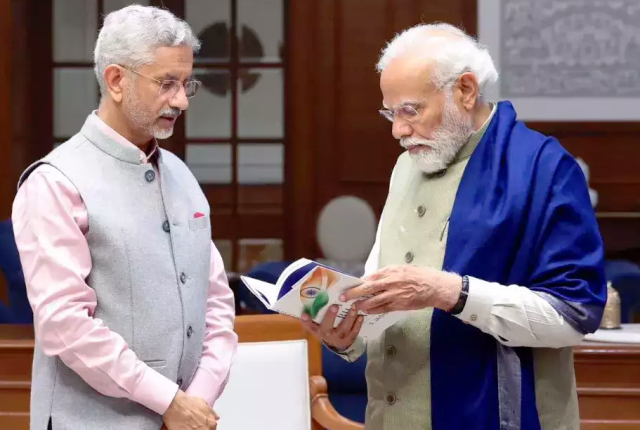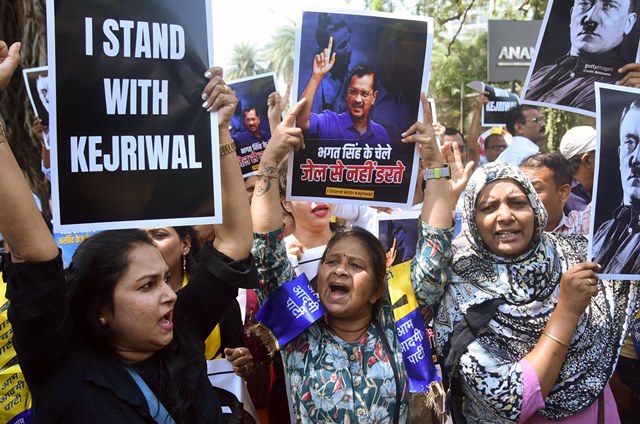
What does COP mean for India?
In just a few weeks, the most important climate talks since the Paris Agreement were signed will decide the fate of global climate action… So, what’s in store for India, despite the expectation that Prime Minister Modi will get a less than pleasant welcoming from the Scottish Hosts of the 26th United Nations Climate Change Conference and talk around leaked documents from India to the UN.
Current pledges combined put the world on track for 2.7º C of warming, which will lead to irreversible environmental changes and extreme weather events, and for South Asia, India is in the spotlight as the world’s potential next biggest polluter in the second half of this century, if China and the US reduce their carbon emissions as promised.
This 26th Conference of Parties, i.e., COP26 is being regarded as the most important conference since 2015, when the Paris Agreement was released by the 197 members of the United Nations Framework Convention on Climate Change (UNFCCC). In 2015 in Paris, countries pledged to keep global warming well below 2º C, they intended to do this through a series of individual emissions reduction pledges known as the Nationally Determined Contributions (NDCs).

On the agenda at COP 26
Five years down the line, countries were scheduled to return to the forum and finalise a rulebook on how to implement the Paris Agreement. Some industrialised countries and civil society groups also hoped that all countries would submit more ambitious NDCs. The UNFCCC secretariat pushed for this by asking all countries to update their NDCs.
None of this happened in 2020 due to the Covid-19 crisis, which led the UN to postpone the meeting. Negotiations are resuming this year with the same agenda. Nations will need to reach consensus on how to measure and potentially trade their carbon reduction achievements, a sticking point that prevented them from finalising the rulebook in previous years. They will also need to ratchet up their national pledges for a chance to keep global warming within 1.5C.
Current pledges combined put the world on track for 2.7º C of warming, which would lead to a slew of irreversible environmental changes and extreme weather events such as floods, heatwaves, cyclones, abnormal rains and more. According to the Intergovernmental Pane on Climate Change (IPCC), the UN scientific body on climate change, the world is currently well on track to reach 1.5º C of warming by 2040, and South Asian economies are among the vast majority of countries that are not doing enough to improve on this.
India’s position before COP26
It is important to not South Asia is home to nearly a quarter of the world’s population and to some of the countries that are most vulnerable to the impacts of climate change. As COP26 is imminent, in the next round of global climate talks under the UNFCCC, South Asian nations are preparing to make a case for putting their development needs at the centre of their carbon reduction pathways.
India’s climate pledges involve a reduction in the carbon intensity of its economy, meaning that emissions are expected to grow together with the country’s economy, albeit at a slower pace. The country’s pledges and carbon reduction policies have recently been deemed ‘highly insufficient’ by the think tank Climate Action Tracker, which analyses countries’ climate pledges against the global 1.5º C goal.
According to a note circulated by the COP 26 presidency, the meeting’s priorities will include a push towards raising USD 100 billion per year in climate finance to help developing nations decarbonise and adapt to climate change, a goal that is still a distant prospect nearly two years after its deadline. Parties will also be expected to address the gap between their NDC plans and the 1.5C goal, the note says, encouraging all countries to develop strategies ‘pointing the way to net-zero.’
The net-zero debate
In South Asia, India has been under the spotlight as the world’s potential next biggest polluter in the second half of this century, if China and the US reduce their carbon emissions as they have promised. International partners have been putting pressure on the Modi administration to set a 2050 deadline for India’s emissions to reach ‘net-zero’, meaning it is able to absorb all the emissions it produces. As COP 26 approaches, observers are waiting for the country to take a stand on this expectation, following other major economies such as China, Japan, South Korea, France, and the UK.

However, Kelkar says, the example set by rich countries is not enough to inspire confidence among developing nations. While net-zero targets address a distant future, she says, “what we need is immediate and tangible emission cuts over the next few years.” At this year’s COP, she says, “we need to meet the long-overdue climate finance target of $100 billion per year, [and] we need to close years of pending negotiations on international carbon trading.”
Reaching net-zero is “absolutely critical for all countries, including India and its South Asian counterparts,” says Vaibhav Chaturvedi, an economist with the think tank Council on Energy, Environment, and Water (CEEW), who specialises in the study of low carbon pathways. “But it can’t be by 2050 for all the countries. Countries should be given time to choose a net-zero year depending on their national circumstances.” Negotiators from South Asia, he says, “have to ensure that they push for equity in the net-zero debate, along with enhanced financial flows to aid climate mitigation and adaptation to this part of the world.”
The Indian government has not yet finalised its COP 26 strategy, but recent speeches by environment minister Bhupendra Yadav have been focusing on the need for industrialised countries to cut their own emissions, and to do so in this decade instead of setting a distant mid-century goal.
The Leak
As mentioned above, India is the world’s third-largest carbon emitter, after China and the US, yet the BBC has found in leaked documents to the United Nations that India intends to continue to fuel their country with coal.
India aims for renewables and nuclear energy to account for 40% of its installed electricity capacity by 2030 – a goal it could achieve ahead of time, according to the Climate Action Tracker (CAT).
But it remains the world’s second-largest consumer of coal, which still powers more than 70% of its grid. But coal will be difficult to give up, India has told the team of scientists compiling the UN report ahead of the summit in Glasgow.

The reports – which bring together evidence on how best to slow down global warming – are by the Intergovernmental Panel on Climate Change (IPCC), the UN body studying climate change.
“In spite of substantial growth in the renewable energy sector in India, coal is likely to remain the mainstay of energy production in the next few decades for sustainable economic growth of the country,” said a senior scientist from India’s Central Institute of Mining and Fuel Research, according to the leaked documents. Follow this link to read more on Why India can’t live without coal
CAT estimates that by 2030, India’s emissions intensity will fall to 50% below 2005 levels, going past its avowed target, 35%. But India has yet to explain how it will reach net-zero emissions – nor has it said by when it plans to do so.
China, the world’s biggest carbon emitter and coal consumer, has pledged to go carbon neutral by 2060. And demand for coal in the country has also flattened, possibly leaving the future of fossil fuel in the hands of Indian policymakers.
What can South Asia bring to the table at COP 26?
While a net-zero commitment by mid-century may be unfeasible for countries in South Asia, Bangladesh and Nepal have submitted updates to their climate pledges prior to COP 26, increasing their mitigation efforts in line with the principles of the Paris Agreement. India is yet to decide whether it will come forward with a fresh set of promises at COP 26, but so far lawmakers have made clear that they won’t raise climate ambitions under pressure from developed countries. The country, they point out, already has some of the most ambitious clean energy goals, with 450 GW of clean energy capacity to be installed by 2030.

Despite its renewable targets, 80% of India’s energy needs are currently met by fossil fuels, particularly coal, a figure that will likely face scrutiny in Glasgow. “It’s important to understand the risks [of certain energy policy choices] as much as the opportunities,” says Christopher Beaton, who leads the Sustainable Energy Consumption programme at the International Institute for Sustainable Development (IISD). “I think that it’s less about trying to force countries to commit to stop building coal, and more about assessing the risks that come with it.”
In the case of India, Beaton says, there’s already an oversupply of coal power capacity, which means many of these assets will eventually become stranded. Holding on to too much coal also means that adding a lot of new renewable energy capacity may not necessarily help decarbonise the economy.
“Committing to shifting public financial flows away from fossil fuels and towards clean energy is a proposition that almost every country can back,” he says. “It’s something that will definitely support a lot of the bigger picture ambitions that will be key at the COP 26 table, also increasing the pace of change.”



